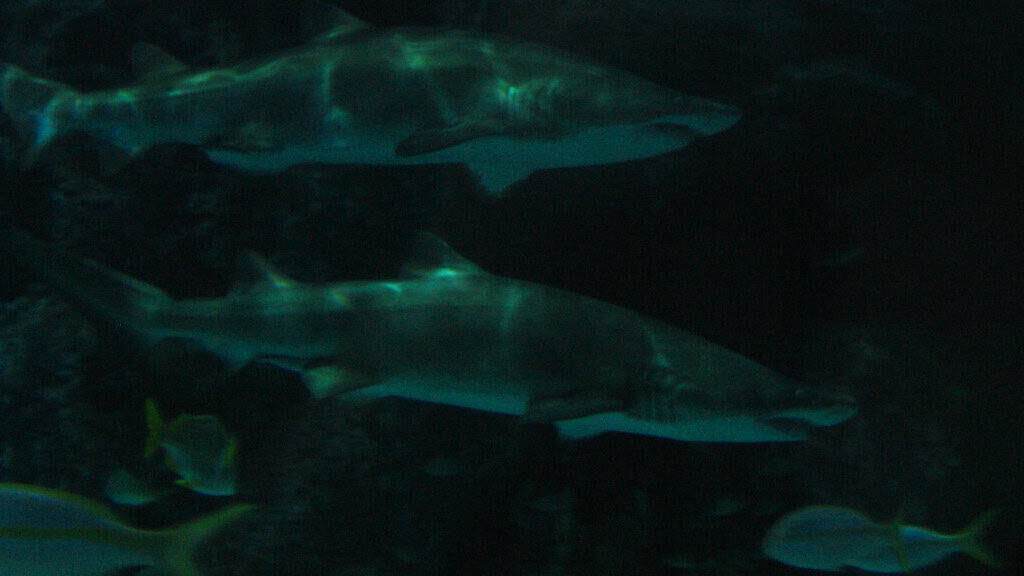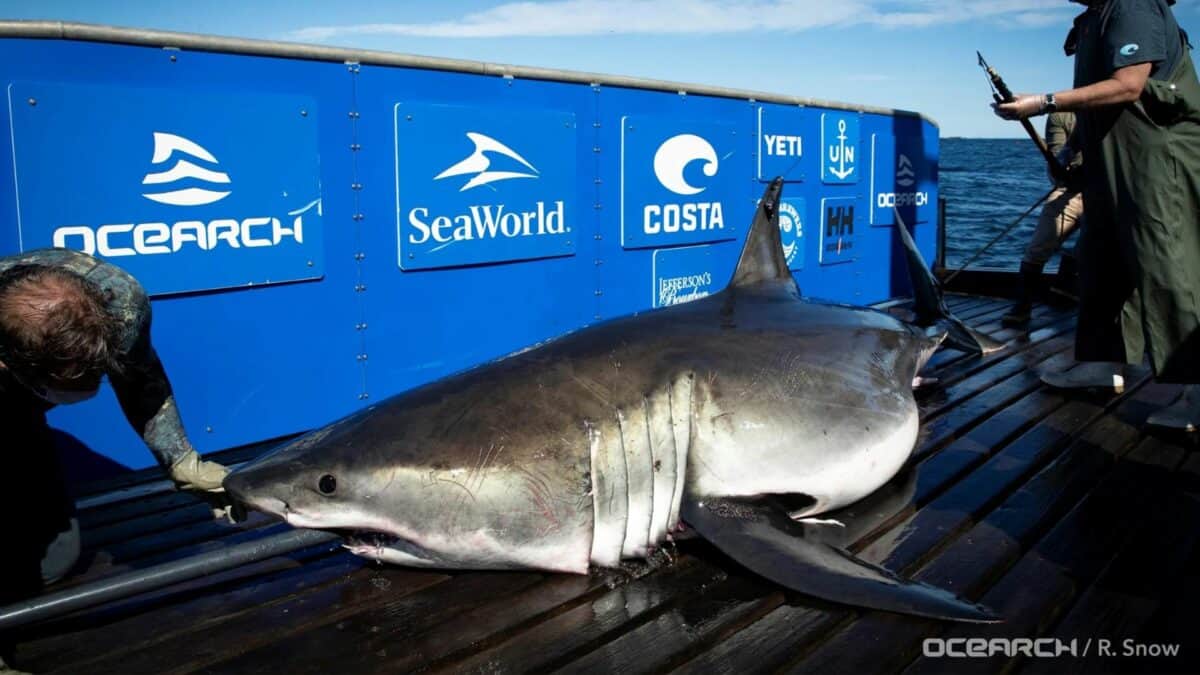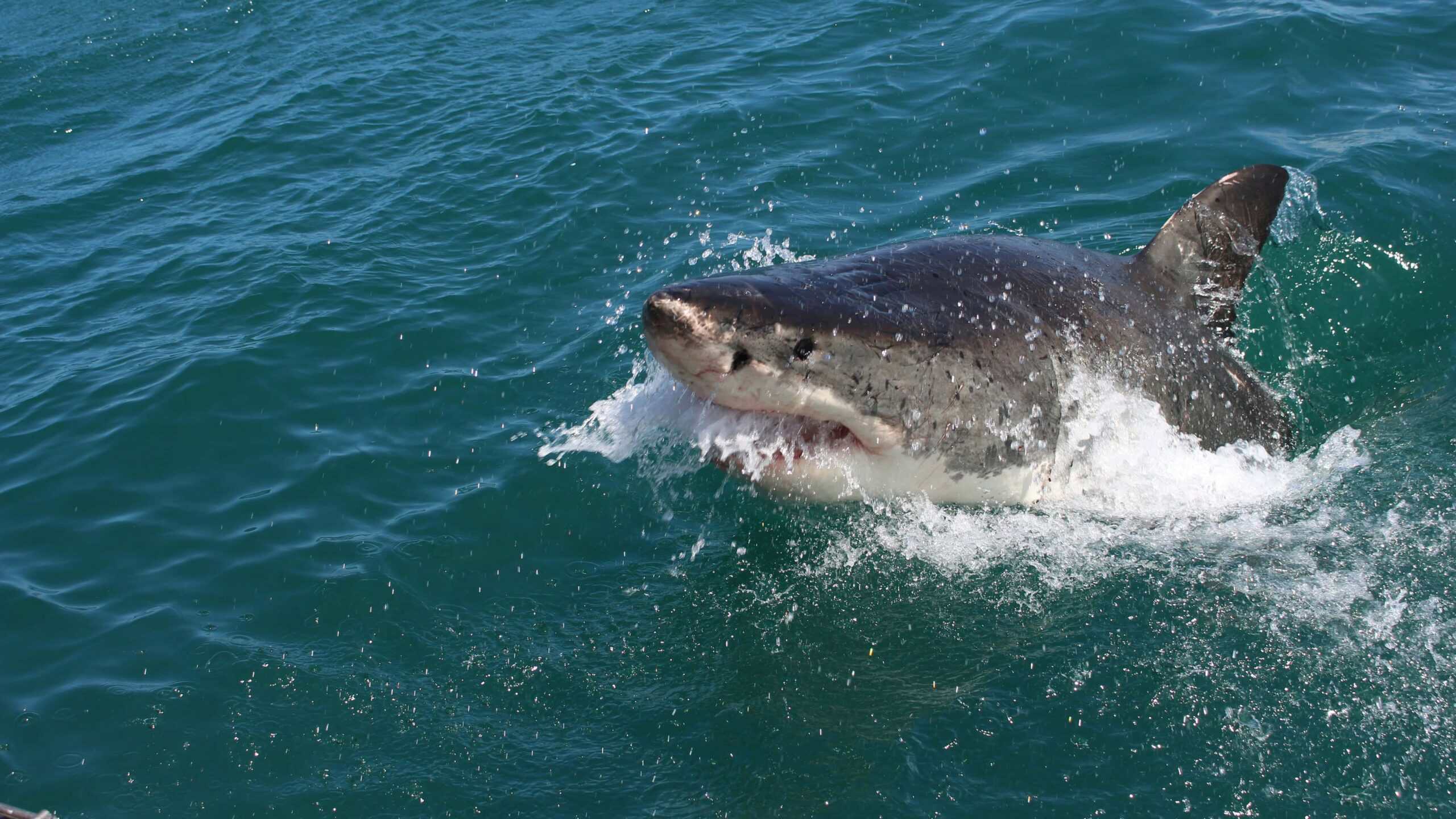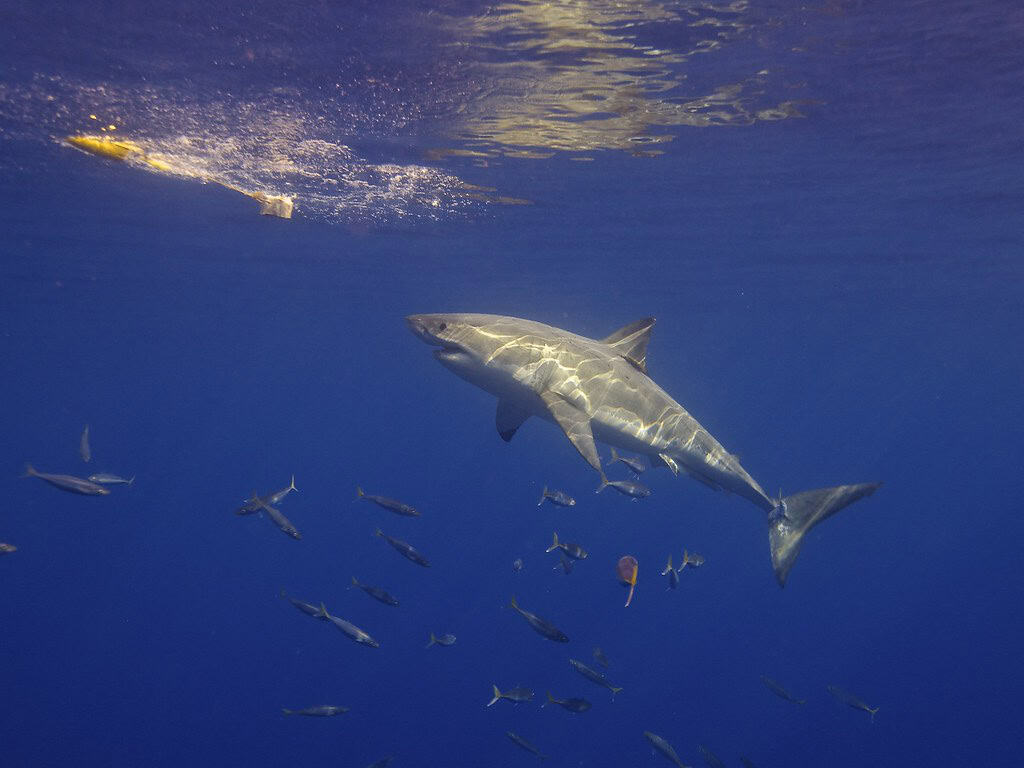Our planet’s oceans are experiencing unprecedented temperature increases, with global ocean surface temperatures reaching record highs in recent years. According to the National Oceanic and Atmospheric Administration (NOAA), the global ocean surface temperature in 2023 was the highest on record, with an average increase of 1.46°F (0.81°C) above the 20th-century average. This warming trend shows no signs of slowing down, as greenhouse gas emissions continue to trap heat in our atmosphere and oceans.
These temperature changes aren’t merely statistical anomalies—they represent fundamental shifts in marine ecosystems that affect all ocean inhabitants, from microscopic plankton to apex predators like sharks. As highly sensitive to environmental changes, sharks serve as important bioindicators of ocean health. Their migration patterns, which have evolved over millions of years, are now being disrupted as they adapt to survive in increasingly warmer waters, creating cascading effects throughout marine food webs and ecosystems.
Shark Migration: An Ancient Survival Strategy

Migration is a fundamental aspect of shark behavior that has evolved over 450 million years. These journeys are not random wanderings but precisely timed movements driven by biological imperatives such as feeding, mating, and pupping. Many shark species follow remarkably consistent routes, often traveling thousands of miles across open ocean basins, using the Earth’s magnetic field, ocean currents, and temperature gradients as navigational cues. The great white shark (Carcharodon carcharias), for instance, is known to travel between coastal feeding grounds and offshore mating areas in what scientists call “shark highways.”
Traditional migration patterns have been observed and documented by researchers for decades. The whale shark (Rhincodon typus) follows plankton blooms across tropical waters, while tiger sharks (Galeocerdo cuvier) in the Atlantic exhibit seasonal north-south movements corresponding to water temperature changes. These patterns were once predictable, allowing scientists to establish baseline behaviors for different species. However, as ocean temperatures continue to rise at accelerated rates, these ancient migratory rhythms are being fundamentally altered, forcing sharks to adapt to new thermal realities or face potential population decline.
Temperature as a Primary Migration Driver

Temperature plays a crucial role in shark physiology and behavior, serving as perhaps the most influential environmental factor in their migration patterns. As ectothermic animals (except for a few species like the great white and mako sharks that can partially regulate their body temperature), most sharks are directly affected by the temperature of surrounding waters. Each species has evolved to function optimally within specific temperature ranges that influence their metabolic rates, digestion efficiency, reproductive cycles, and even swimming speed. When water temperatures fall below or rise above these optimal ranges, sharks must relocate to more suitable environments.
Research conducted by the University of Miami’s Shark Research and Conservation Program has demonstrated that even slight temperature changes of 1-2°C can trigger significant migratory responses in multiple shark species. Tagging studies have revealed that bull sharks (Carcharhinus leucas) move to deeper waters when surface temperatures exceed 30°C, while blue sharks (Prionace glauca) alter their diving behaviors in response to warming water columns. These temperature thresholds act as environmental triggers that initiate migration, and as oceans warm, these triggers are being activated at different times and places than in previous decades, forcing sharks to adjust their migratory timing and routes.
Poleward Shifts: The New Normal

One of the most documented changes in shark migration patterns is the poleward shift of numerous species. As tropical and temperate waters warm beyond optimal temperatures, sharks are extending their ranges toward higher latitudes in search of cooler environments. A comprehensive study published in Scientific Reports analyzed five decades of fisheries data and found that at least 24 shark species have shifted their ranges poleward by an average of 200 kilometers over the past 30 years. This phenomenon is particularly evident along the eastern coasts of North America and Australia, where warm-water species are increasingly being observed in previously cooler regions.
Great white sharks, traditionally found in temperate waters, are now regularly spotted in the Gulf of Maine, where they were once rare visitors. Similarly, bull sharks have expanded their range northward along the U.S. Atlantic coast and have been documented in the Hudson River as far north as New York. In the Southern Hemisphere, tropical reef sharks are appearing more frequently in the temperate waters off Sydney, Australia. These geographic range expansions are creating new ecological dynamics in these regions, as sharks interact with marine communities that have not evolved alongside these predators, potentially altering local food webs and ecosystem structures.
Changes in Migration Timing and Duration

Beyond geographical shifts, researchers are observing significant changes in the timing and duration of shark migrations. Traditional seasonal movements that once followed predictable calendars are now occurring at different times of year, creating mismatches between predator arrivals and prey availability. Acoustic and satellite tagging studies conducted by the Atlantic White Shark Conservancy have shown that great white sharks are arriving at summer feeding grounds off Cape Cod nearly two weeks earlier than they did just a decade ago, and they’re staying approximately 30 days longer into the fall season before migrating south.
Similarly, tiger sharks in Hawaii are extending their residency periods in certain areas rather than adhering to their traditional migratory calendar. Research published in the journal Global Change Biology indicated that seasonal tiger shark abundance patterns around Maui have changed significantly, with higher year-round presence compared to historical data. These altered timing patterns can have serious implications for both shark populations and the ecosystems they inhabit. When sharks arrive before their prey species or extend their stays beyond normal periods, it can lead to resource mismatches, increased competition, and potential disruptions to reproductive cycles that have evolved over millennia.
Disruption of Critical Habitat Use

Warming oceans are not only changing where and when sharks migrate but also how they utilize critical habitats during different life stages. Particularly concerning are the impacts on nursery areas—protected, food-rich environments where female sharks give birth to their young. These areas have specific temperature requirements that provide optimal conditions for shark pup development and survival. As coastal waters warm, some traditional nursery areas no longer maintain the temperature profiles needed for successful reproduction and juvenile growth, forcing pregnant females to seek alternative pupping grounds or remain in suboptimal conditions.
A study conducted in Bimini, Bahamas, by the Bimini Biological Field Station found that lemon shark (Negaprion brevirostris) nursery use patterns have shifted as water temperatures in the lagoon regularly exceed historical averages. Juvenile lemon sharks now spend more time in deeper channels rather than the shallow flats they traditionally preferred, potentially exposing them to different predator pressures and food resources. Similar disruptions have been observed in blacktip reef shark nurseries across the Indo-Pacific, where females are pupping earlier in the season and in different locations than previously documented. These changes in nursery habitat use could have long-term consequences for recruitment and population sustainability.
Deep-Diving Behavior Modifications

As surface waters warm, many shark species are modifying their vertical migration patterns—the movements they make up and down through the water column. Traditionally, many pelagic sharks follow a daily pattern of spending daylight hours in deeper, cooler waters and ascending to warmer surface waters at night to feed. However, research using depth-recording tags has revealed that species like blue sharks and shortfin makos (Isurus oxyrinchus) are now diving deeper and spending longer periods at depth than previously recorded, likely seeking thermal refuge from increasingly warm surface waters.
A study published in Nature Climate Change documented that blue sharks in the Mediterranean Sea have increased their maximum diving depths by an average of 100 meters over the past 15 years as surface temperatures have risen. Similarly, satellite tagging of oceanic whitetip sharks (Carcharhinus longimanus) has shown increased time spent at depths below 200 meters during warm seasons, representing a significant change from their historically surface-oriented behavior. These vertical migrations require additional energy expenditure and may limit access to preferred prey, potentially affecting shark health and reproductive success. Furthermore, deeper diving can bring sharks into fishing zones they previously avoided, increasing their vulnerability to deep-set longline fisheries.
Changing Predator-Prey Dynamics

As sharks alter their migration patterns in response to warming oceans, their relationships with prey species are undergoing significant changes. Traditional predator-prey synchronizations that evolved over evolutionary time are becoming decoupled as different species respond to climate change at different rates. When sharks arrive in feeding areas earlier or stay longer, they may deplete prey resources more extensively than in historical patterns. Conversely, if shark migrations no longer coincide with prey aggregations, they may face nutritional stress that affects their reproductive capacity and overall health.
In South Africa’s False Bay, changing patterns in great white shark presence have been linked to shifts in cape fur seal breeding and pupping schedules, which have themselves been affected by changing ocean temperatures. Similarly, in Australia’s Shark Bay, tiger shark distributions no longer align precisely with dugong and sea turtle abundance as they once did. These misalignments can cascade through food webs, as prey species may experience either increased or decreased predation pressure at critical life stages. The ecological consequences extend beyond the immediate predator-prey relationship, potentially affecting population dynamics of numerous species and altering the structure and function of entire marine communities.
Increased Human-Shark Interactions

As shark migration patterns shift in response to warming oceans, the frequency and distribution of human-shark interactions are changing as well. Coastal areas that historically saw few sharks are now experiencing increased presence, particularly during summer months when human recreational water use is highest. In the northeastern United States, the poleward shift of white sharks following recovering seal populations has led to more shark sightings and encounters along popular beaches. Similarly, in eastern Australia, bull shark encounters have increased in areas south of their traditional range.
While the absolute risk of shark incidents remains extremely low, the changing distribution patterns require adaptive management strategies. Coastal communities previously unfamiliar with significant shark presence now face educational and safety challenges. In Massachusetts, the Atlantic White Shark Conservancy has implemented innovative alert systems and educational programs to address increased white shark presence. In Australia, shark monitoring programs have expanded to new regions as species distributions change. These human dimensions of shifting shark migrations highlight the complex interplay between ocean warming, ecological change, and human adaptation needs in coastal communities worldwide.
Challenges in Shark Conservation

Changing migration patterns pose significant challenges for shark conservation efforts worldwide. Many marine protected areas (MPAs) and shark sanctuaries were established based on historical distribution patterns that may no longer accurately reflect where sharks spend critical portions of their life cycles. As sharks move into new regions, they may lose the protection of established conservation zones and face increased fishing pressure or habitat degradation in areas without adequate management measures. Furthermore, as sharks cross more international boundaries in their shifting migrations, coordinating conservation efforts becomes increasingly complex.
The conservation challenges extend to monitoring and research efforts as well. Scientific surveys designed to assess shark populations in specific regions may no longer capture the full distribution of species, potentially leading to inaccurate population estimates. The International Union for Conservation of Nature (IUCN) reports that 37% of shark and ray species are now threatened with extinction, with climate change effects compounding existing pressures from overfishing and habitat loss. Addressing these challenges requires dynamic, adaptive management approaches that can respond to the continuing changes in shark distributions as oceans continue to warm in coming decades.
Adaptive Management and Research Needs

Effectively responding to changing shark migration patterns requires innovative adaptive management approaches and expanded research efforts. Dynamic ocean management—which uses near-real-time data on ocean conditions, animal movements, and human activities to inform flexible protection measures—represents a promising framework. Rather than static protected areas with fixed boundaries, this approach can shift conservation measures as shark distributions change. The NOAA’s TurtleWatch program, which has been adapted for shark protection in some regions, exemplifies this approach by providing fisheries with information on where sharks are likely to be concentrated based on current ocean conditions.
Research needs are equally pressing, particularly long-term monitoring programs that can document changes over decades rather than years. Expanded collaborative tagging programs, environmental DNA (eDNA) sampling to detect shark presence without direct observation, and continued development of oceanographic models that can predict future distribution changes are all critical components. The Global Shark Movement Project, which aggregates tracking data from researchers worldwide, represents an important step toward the comprehensive understanding needed to anticipate and respond to continuing changes in shark migration patterns as ocean warming accelerates.
Sharks as Sentinels of Ocean Change

Beyond the immediate concerns about shark conservation, the changing migration patterns of these ancient predators serve as important indicators of broader ocean health and climate change impacts. As highly mobile species that respond quickly to environmental shifts, sharks function as sentinel species that can alert us to changes occurring throughout marine ecosystems. The poleward movements of numerous shark species provide visual evidence of warming trends that might otherwise remain abstract statistics. Their behavioral adaptations illustrate the biological reality of climate change impacts more vividly than temperature graphs alone.
The migrations of sharks also connect distant ecosystems, transferring energy and nutrients across ocean basins and between coastal and pelagic environments. As these connections change with shifting migration patterns, they can reveal broader ecosystem reorganizations that might otherwise go unnoticed. By continuing to study how sharks respond to warming oceans, scientists gain insights applicable to other marine species and ecosystems. The lessons learned from shark adaptations may help predict how other marine animals will respond to continued warming and inform ecosystem-based management approaches for oceans undergoing rapid transformation in the coming decades.
The changing migration patterns of sharks in response to warming oceans represent one of the most visible and consequential manifestations of climate change in marine ecosystems. These shifts are not merely academic curiosities but fundamental alterations to ecological relationships that have evolved over millions of years. As sharks move into new territories, arrive at different times, and utilize habitats in novel ways, they set in motion complex ecological ripple effects that will continue to unfold in coming decades.
The future holds both challenges and opportunities for sharks and the humans who study and coexist with them. While some shark species demonstrate remarkable adaptability to changing conditions, others face increasing stress from the combined pressures of habitat alteration, prey distribution changes, and continued fishing pressure. Understanding and addressing these challenges requires continued scientific monitoring, adaptive management approaches, and increased public awareness of sharks’ ecological importance. By recognizing sharks not as fearsome predators but as sensitive indicators of ocean health, we gain valuable insights into the changing nature of our blue planet and the urgent need for climate action to preserve marine biodiversity for future generations.
- How Climate Change Is Pushing Sharks Closer to US Beaches - August 16, 2025
- 12 Birds Known for Their Unique Songs and Calls - August 16, 2025
- Animal Moms That Go Above and Beyond for Their Young - August 16, 2025

